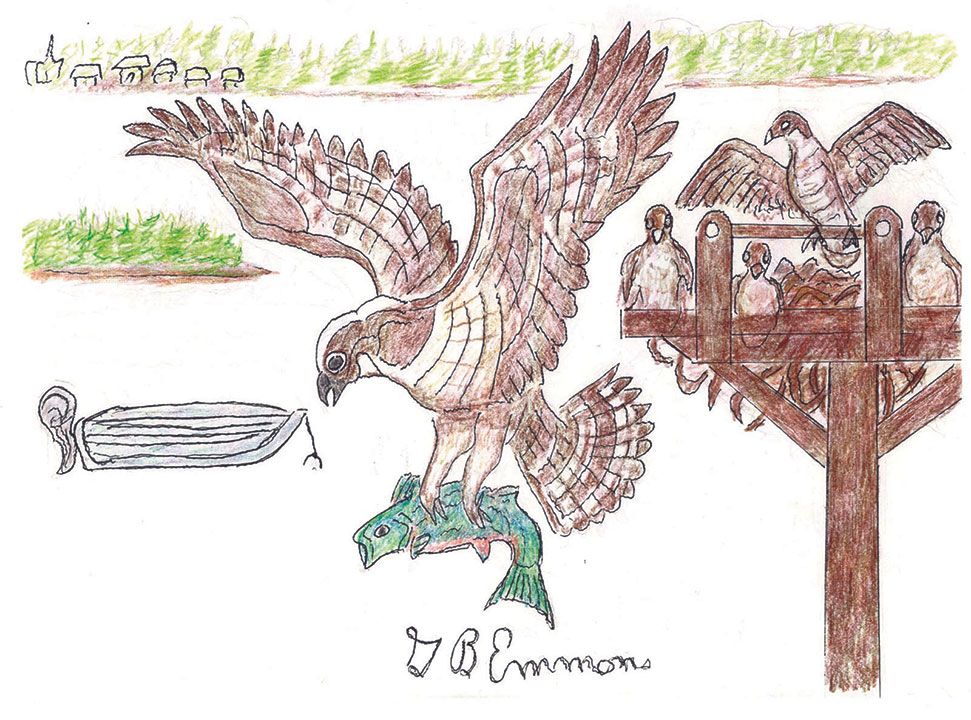Looking out along the shoreline of Little Bay in Fairhaven, at least several miles in both directions, my wife Jan and I spend late afternoons bird-watching a number of Ospreys’ air acrobatics, plunging down from nearly a hundred feet with a splash below the surface of the water, and then come up clutching a flopping fish.
The Osprey is not called a fish hawk for nothing, as diving for fish is the main means of spectacular predation, not only for its own survival, but also to feed and raise a small family of its mate and several offspring on a seafood diet. Apparently, this feeding ground of Little Bay is so shallow – only a few feet at low tide – that from the air a circling Osprey can clearly see through to the bottom, and easily pinpoint a number of just-below-the-surface fish such as carp, suckers, alewives, menhaden, and even sunfish.
As all evidence points to the fact that the Osprey mainly takes species of fish that are of little value to mankind, this picturesque and spectacular predator deserves to be regarded as a subject for perpetual protection, as in my drawing of its fishing expedition that for bird watchers is so entertaining. Yet in our observation in the vicinity of at least four nesting sites, each pair of nesting parents is a very affectionate bird raiser when the young are in the nest, always within call, ready to defend their offspring.
When the young are fledged and able to fly well, they begin fishing for themselves, as they are able to master the intricate balance problem of flight. At first, they have very little success. We have seen a young bird plunge into the water several times in succession without securing a fish, but did not appear to be discouraged from trying again.
When it sees a desirable target near the surface, it usually hovers and circles just for a moment and then closes its wings to shoot downward towards its prey. The force of the bird’s plunge is so great it must strike the surface head first before plunging under water to avoid injury. Instantaneously, a protective film comes down over its eyes as well as its ears to maintain the direction to its target. Rising to the surface with the weight of a fish in its claws is facilitated by having hollow bones that help it up, to momentarily rest on the surface, before achieving flight.
The Osprey always turns the fish headfirst in the direction of flight for aerodynamic efficiency. Upon catching a fish, the successful angler usually stops to rest on a convenient perch, often disembowels and fillets it for further eating back at the nest with the rest of the family.
When the frosts of autumn chill the coastal currents, many species of fish subsequently begin to move southward, but, before they follow, Ospreys daily repair their nests with strong, freshly broken sticks to prepare them for the storms of winter.
At the nearest platform to us, when the male is out fishing, his mate is collecting grassy fill for the comfortable roosting at night for their offspring. In mid-September, the family appears to break up as parents stop feeding the young, encouraging them to strike off in migration on their own. Once they become independent, both parents next year will forcefully discourage them from coming home again.
The American Osprey was once a familiar sight to New Englanders along coastlines, and now, for us living here, the sight of their survival is somehow a bird-watching afternoon entertainment that just so happens during the arrival of happy hour.
By George B. Emmons
